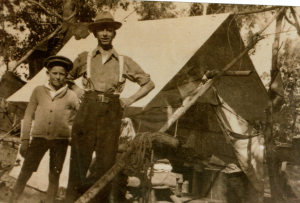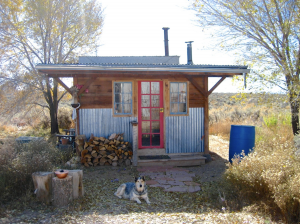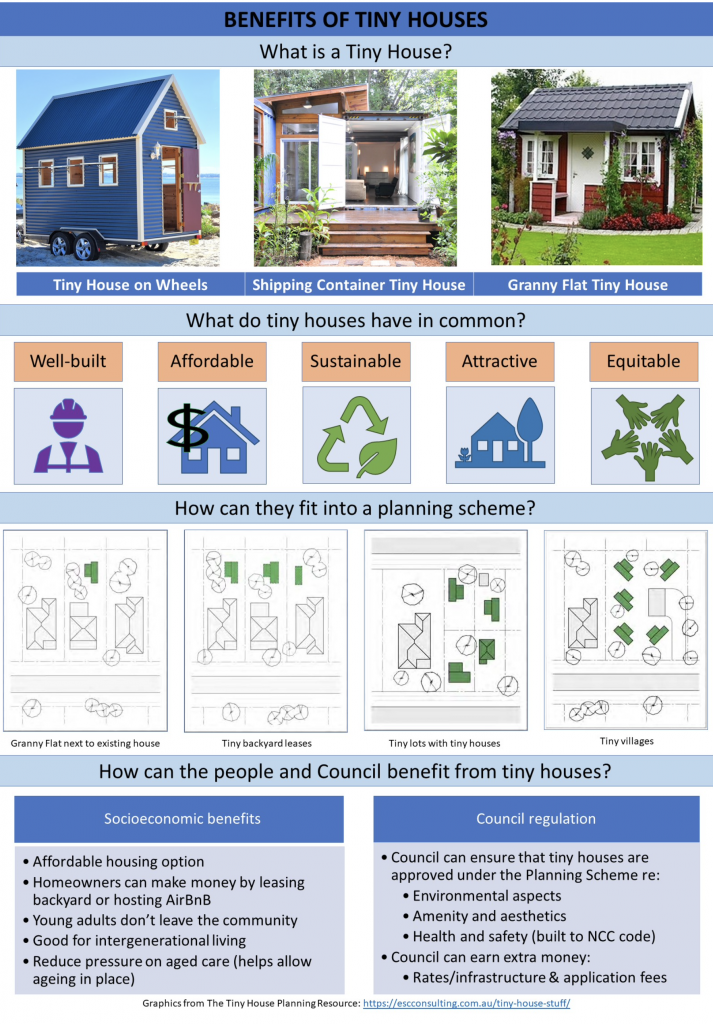. . . and home can be many things.
It’s more than a roof over one’s head. It’s a sense of security, of belonging to a place and people, a happy space, a place of memories.
My grandfather lived in a tent while he built a modest Federation house in the 1920s in Wingham. My grandmother, my mother and her baby sister, went home to England to visit the rellies for the first time since she’d married and come to Australia.

Quietly, one time, Poppy told me that his time in his tent had been a time of peace and hope and joy looking to finally settle in a home with his family. (He and great grandad had worked on the railways so always moving.) But of course he said he’d never say that to my grandmother!
We live in different times indeed. Finding, let alone affording, a place to live these days is scary and expensive. The long lines of potential renters on Saturday showings is very telling. A home of one’s own can be a far off dream. Home ownership can be a crisis of paying off an exploding mortgage.
Solutions are difficult, and no one is happy. Tower blocks like stacked cages in a hen coop, crammed city dwellings that stretch towards the mountains or the coast with little if any amenities like public transport, or public recreation areas, a library or shops or cafes, turn into sprawling islands of loneliness. How do you meet people, socialise and function in such crowded isolation?
And in rural areas, good agricultural land, koala habitat and forests are being cleared for cheerless, treeless, cheek by jowl housing estates.
There has to be a better way, apart from less people. So before tackling the construction of new homes, there is an immediate solution for at least one sector away from cities and suburbia.
However, as usual, the bleeding obvious is being ignored and buried under red tape.
It’s Tiny Homes, whether they be a converted motorhome or a tiny house on wheels.
Then there’s existing homes that were built in the time long, long ago before bureaucracy got in the way.
Midcoast Council insists on demolishing homes that were built prior to the red tape era. Never mind that some are very attractive, some a bit thrown together, but meet all needs including looking after their own sewerage, water and power. They have chooks and veggies and owners who like it that way.
I received the following email from a fellow living outside Lismore.
“Over the past few years I have put my heart and soul into restoring an old banana shed. This has been my home on and off for the past 4 years.
Before the flood in early 2021 I joined the Byron Sire Council’s amnesty moratorium on unapproved housing in the shire.
This was aimed at assisting tiny homes such as mine to “go legal” and avoid potential punitive actions later down the track. One month into the amnesty, council cancelled this approach citing it to be a failure and compliance officers were told to apologise to residents for the way they went about handling the task of the amnesty.
The worst part of this is that council used the amnesty forms later as information to send punitive actions, orders and fines to residents. (This alone has cost me upwards of $5,000 in fines.)
Since being sent a non habitation order post the flood we engaged the help of ex-town planner Ray Darney to submit a DA for us. This DA process has cost us $10K to date with no end in sight. Ray has been appalled at how council compliance have treated him and ourselves throughout this process and has since removed himself from being our town planner saying the council people don’t speak sense any more.
This attempt at a DA and honouring our initial commitment to the now long-gone amnesty has been to no avail and I have since been sent an order to demolish my home.
This home is at least 20+ years older than myself and arguably constructed in 1946 after WW2. To tell me to demolish this beautiful home at the end of a 100acre block, post the largest flood and housing crisis in living memory is truly bureaucracy gone mad. This is unethical.
At this stage we can not, and will not, demolish the house. There is no where to move to, and we do not have the financial capacity to either move the house, demolish the house, or move our family elsewhere. We also cannot afford to do nothing, as we risk huge financial punishment for non compliance.
I have friends and neighbours in the same position with council who have also been sent demolition orders etc. It is worrisome to think that this is happening not only to myself but also to many long term residents of this area who are not as mentally and financially stable as myself, not to mention the PTSD post the largest flood in living memory.”
(Frankly, having lived for many years in the Byron Shire, demolishing “unauthorised “ homes would wipe out all of Nimbin, and half the areas around Mullumbimby and surrounds! Ed)
Surely there is a better way to co-exist with unregulated homes to see that they meet safety requirements etc. These tend to be people who want to live off the grid, close to nature. They are better neighbours than a bunch of neo Nazi right wing extremists or bikie gangs who have hideaways in the scrub.
Further north there is a woman who owns and lives on 40 acres who shares her land with three women . . . two are older, one single with a young son. They live in attractive mobile/Tiny Homes amongst trees and views. Each is some distance (a walk away) from the other for privacy, but they get together on occasion round a campfire to talk and socialise. They feel protected and safe. They pay the owner, whom they regard as a good friend, a small rent from their pension so they are not “sponging off the taxpayer.”
They have solar for heat, water tanks, individual grey water sewerage system, they take out their own garbage. They shop locally. The son goes to a local school and says he has mum and three grannies.
But this paradise further north is under a cloud as the council make life difficult instead of saying, how great is this!
Tiny Homes Manufacture Booms

There is an abundance of Tiny Homes for sale even on local Facebook pages. They range in price, but offer an immediate solution as granny flats or family/friend/tenant accommodation. How many properties in the midnorth coast would be willing to have a Tiny Home somewhere on their property? Like any tenant potential tiny home owners can be checked out.
But Red Tape binds things up so much, most people give up. Here’s what came back from the Media Advisor to MidCoast Council Director Mr Paul DeSzell –
What is the Council policy if home owners want to put a tiny house on their property?
Tiny house developments rules are provided by the state government. Tiny homes can be approved under the development planning and moveable dwelling (caravan) legislation.
The approval requirements depend on the type of tiny house you consider and the zoning of the land it’s situated.
They have to seek Council permission don’t they? Is that a fast decision by Council considering the housing crises currently.
A property owner that wants to place a tiny home on a property to offer as rental accommodation will need to obtain both a development consent and approval as an activity under Section 68 of the Local Government Act 1993 (LG Act).
Also, as a manufactured home and moveable dwelling fall within the definition of ‘relocatable home’ they must satisfy the relevant provisions of the Local Government (Manufactured Home Estates, Caravan Parks, Camping Grounds and Moveable Dwellings) Regulation 2021.
The process takes the same time as is does to approve a single house.
If permission is granted what does it cost the rate payer/home owner to obtain? If the tiny house is put there to obtain rent does that complicate things? Tiny houses are sought for elderly family members, like a granny flat, so do the same restrictions, if any, apply?
The costs will vary and we recommend anyone interested in this to contact Council for an estimate.
Rental or short term letting of any tiny house will be one of the questions asked in the approval process. Council may seek additional information from a property owner during the assessment process.
For family accommodation purposes, there are some exemptions. If a tiny house is to be provided to accommodate a member of your home, there must be an approved existing dwelling already on your property, and the tiny home must meet the Local Government (Manufactured Home Estates, Caravan Parks, Camping Grounds and Moveable Dwellings) Regulation 2021.
We recommend anyone wanting to accommodate a family member in a caravan speak contact Council to discuss their situation.
If permission is obtained by Council to put in a tiny house, can solar power and water tanks and septic systems be used instead of town utilities.
As part of the application process, Council will require the owner to indicate how that will provide a safe and health conditions, which in those circumstances where town water and sewer and power is available, we would request that an approved tiny home have access to these directly.
Of course Council would prefer the rates for their empty coffers.
We have to start thinking outside the square meterage of a treeless block with virtually no backyard and neighbours in hand touch vicinity.
Locally the homeless list is growing, domestic violence and crime is on the increase in difficult and constrained times. Maybe we have to go back and look at the innovative housing program Wingham once did. Or else, unfold the ole khaki tent.
DM.


1 Comments
I find this article interesting given that a letter was included with my last rate notice practically begging me to add rental accommodation to my property. Given how complicated that is to get through council it’s baffling. Council is literally culpable for the housing shortage